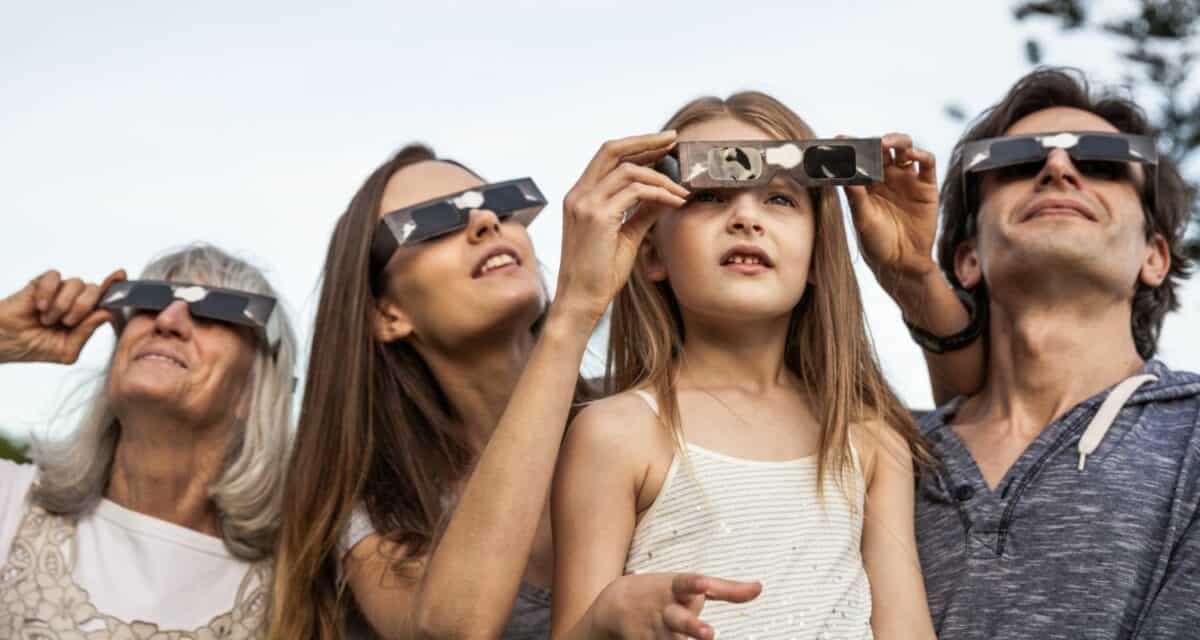- Do You Need Anti-Golf Ball Screens? - October 16, 2024
- Transform Your Outdoor Living Space with Premium Patio Shades - October 4, 2024
- Sliding Glass Doors: The Shield Against Arizona Desert Heat - September 27, 2024
Have you ever experienced a solar eclipse? It’s rare but for almost anyone who has witnessed one, it can be a beautiful and rare occurrence. The next solar to look out for is not until October of 2023 and for us Arizonans, we will only get a partial view of one. However, if you are hungry to find out more about this amazing experience here are some answers about what to expect, where to look and how to stay safe when searching and viewing a solar eclipse!
What is a Solar Eclipse?
A solar eclipse is a brief and spectacular moment when the Moon passes between the Sun and Earth creating a shadow which blocks out the sun! It may be the middle of the day when all the sudden the sky grows dark, the birds quiet like it’s night and something just seems out of the ordinary. When the Moon blocks the sun in totality it is called a total solar eclipse but when just some of the Moon covers the sun it is called a partial solar eclipse.
For those lucky enough to have experienced a total solar eclipse you may understand how come the song “total eclipse of the heart” is as passionate as it is! As the Moon blocks the Sun’s light, it casts a shadow on part of the Earth. When you are in this shadow it is called the path of totality. This means where you are on earth makes a big difference as to experiencing a total solar eclipse. For Arizonans our upcoming eclipse will only be partial but even these can be thrilling. As the sun grows darker, animals and people alike will become confused.
Shadows During A Solar Eclipses
For those who have experienced a solar eclipse you may remember that light and shadows acted a bit differently. You may notice as the moon slowly orbits past the sun causing a shadow you may notice that every bit of light through trees recreates the crescent shadow of the moon passing by. NASA describes this particularly bizarre process by stating that “During a solar eclipse, the Moon actually casts two shadows toward Earth. One shadow is called the umbra which becomes smaller as it reaches the Earth. This is the dark center of the Moon’s shadow. The second shadow is called the penumbra.”
The Solar Eclipse of 2023
Residents of Arizona are in a partial path of the eclipse next on Oct. 14, 2023. According to NASA, this annual type of eclipse occurs when the moon is at its farthest point from Earth and passes between the sun and Earth. This will make the moon appear slightly smaller than the sun causing only partial coverage.
“If the moon is a little bit further away from the center to orbit, it’s a little too small to completely block the sun. So, then we get what’s called a ring of fire around where you can still see parts of the surface of the sun, the bright parts of the surface around the dark side,” explains Professor Steve Kortenkamp, from the University of Arizona Lunar and Planetary Laboratory.
Get ready for a partial view of the annular solar eclipse which is anticipated to last around three hours and will be seen in Phoenix starting at 8:10 a.m. on Saturday, Oct. 14. With the maximum eclipse occurring at 9:30 a.m. and coming to completion around 11 a.m.
Looking for Total Eclipses?
If you are looking for a total eclipse of the sun, it won’t happen until Monday, April 8, of 2024. While we won’t be able to see the total eclipse from our home state it may be worth the drive during this time to visit New Mexico and Utah where it will be able to be viewed. An event like this hasn’t happened since 2017, so make your travel plans now!
Sun Viewing Safety
It’s never safe to look directly into the sun as the UV rays can damage your vision. When watching a partial or annular solar eclipse directly with your eyes, experts recommend safe solar viewing glasses (“eclipse glasses”). These are not normal sunglasses. Even partially eclipsed the sun can burn the tissue of your naked eyes.
Are you looking for more relief from the sun? Our window screens and patio shades can block out 90 percent of the sun’s harmful UV rays. Contact us now to find out more.

